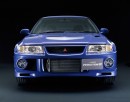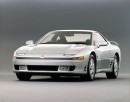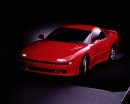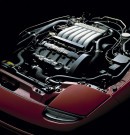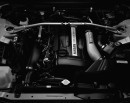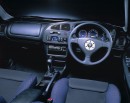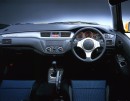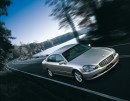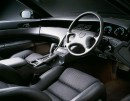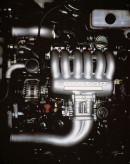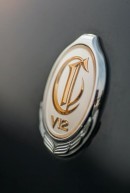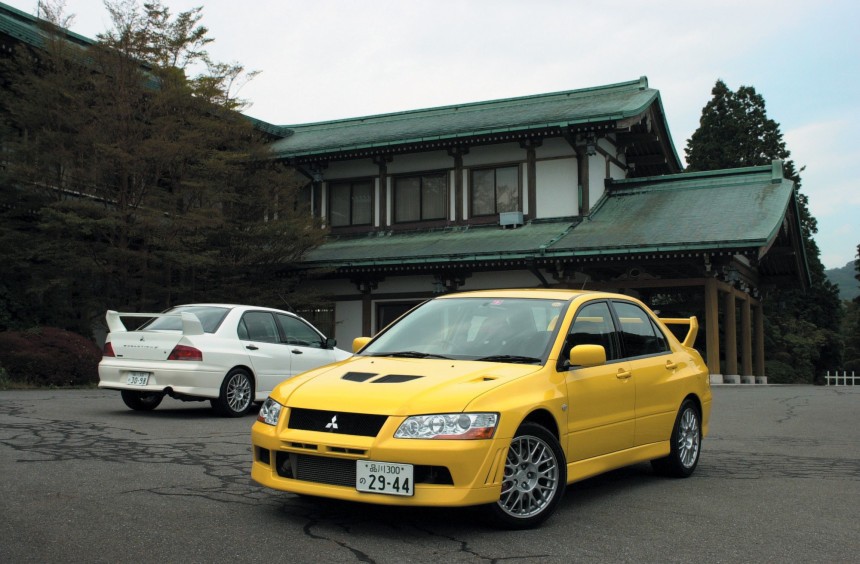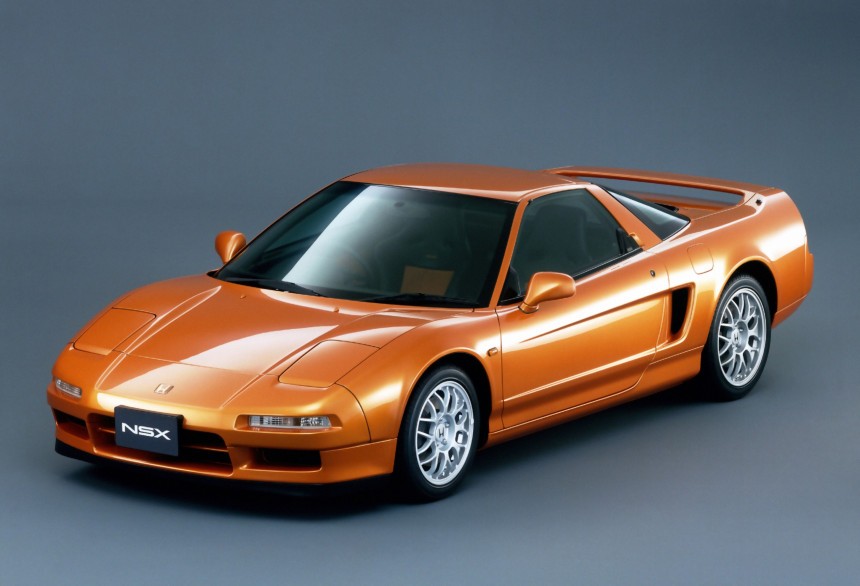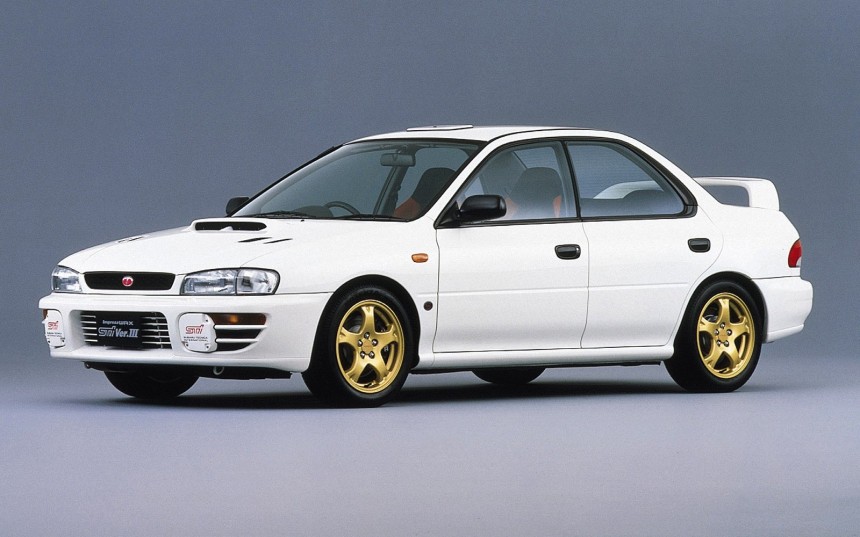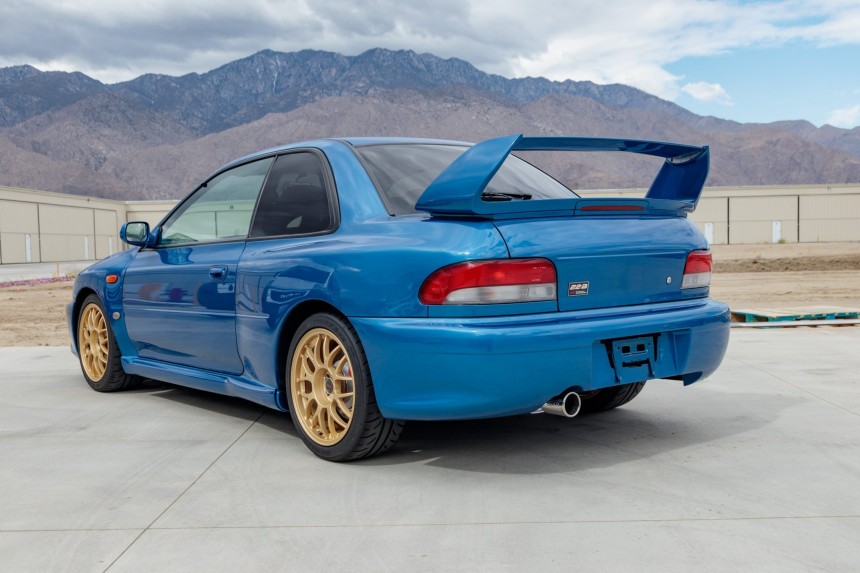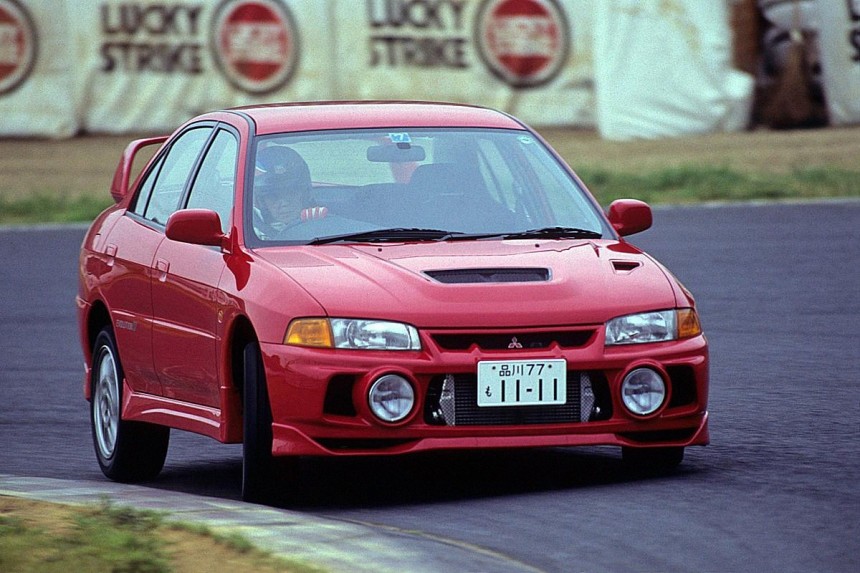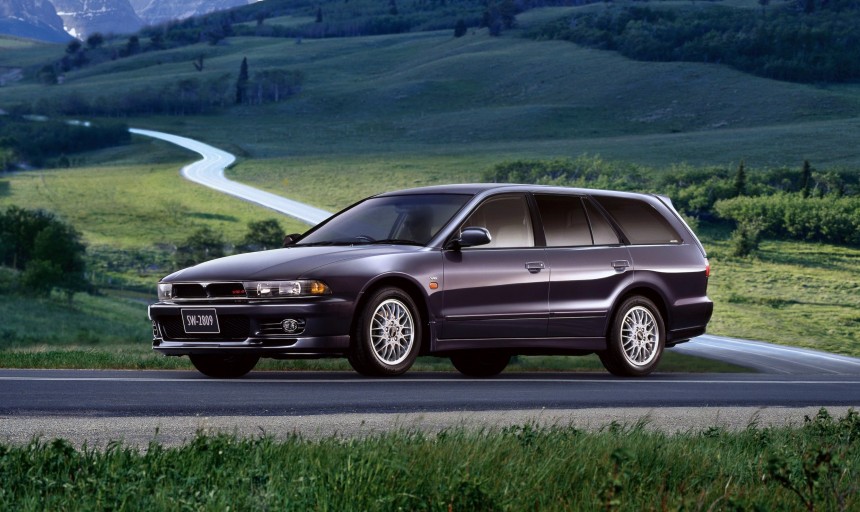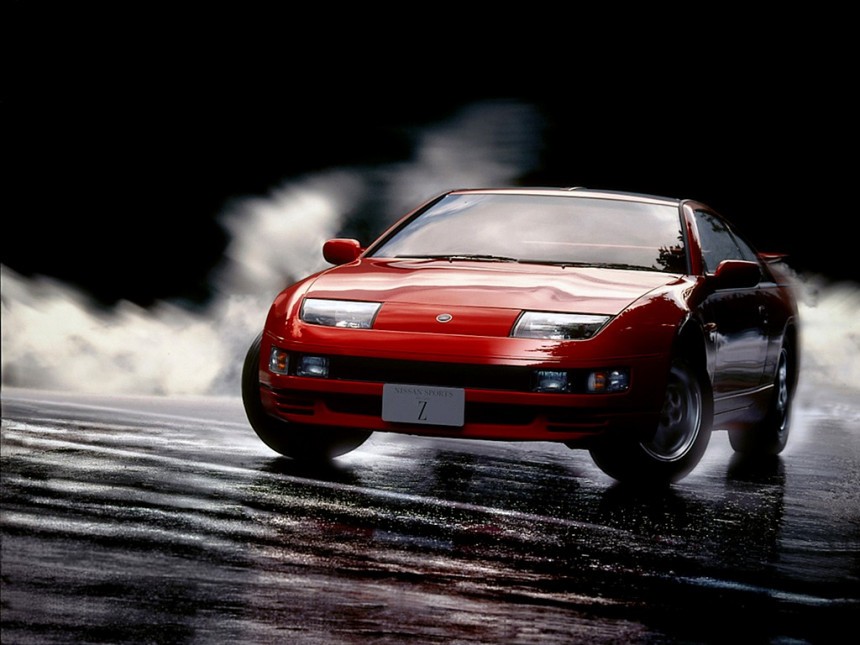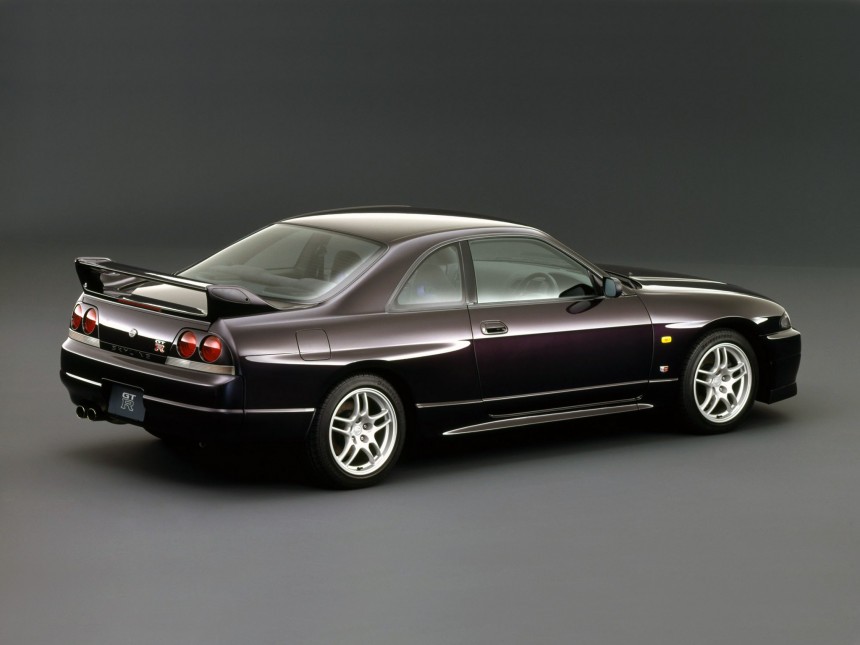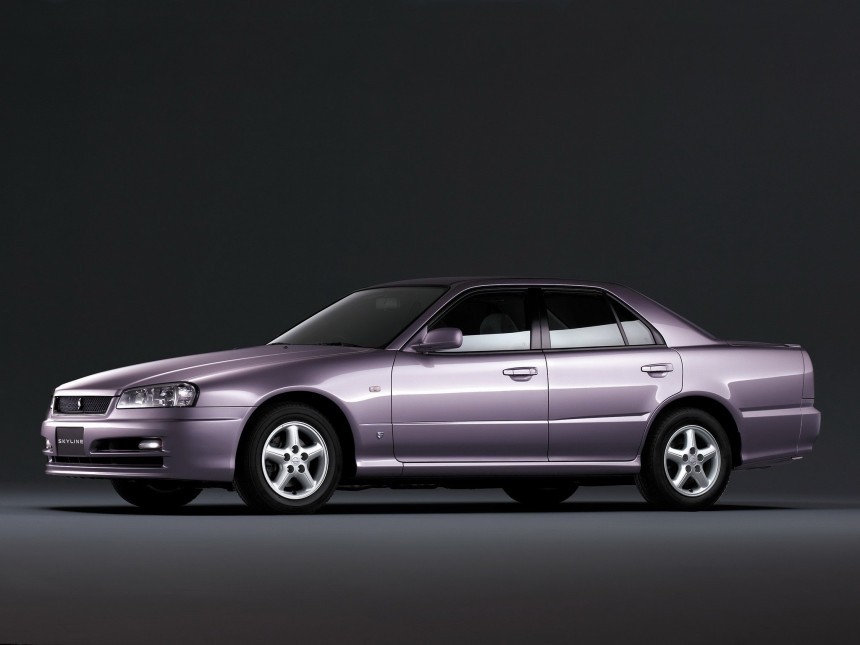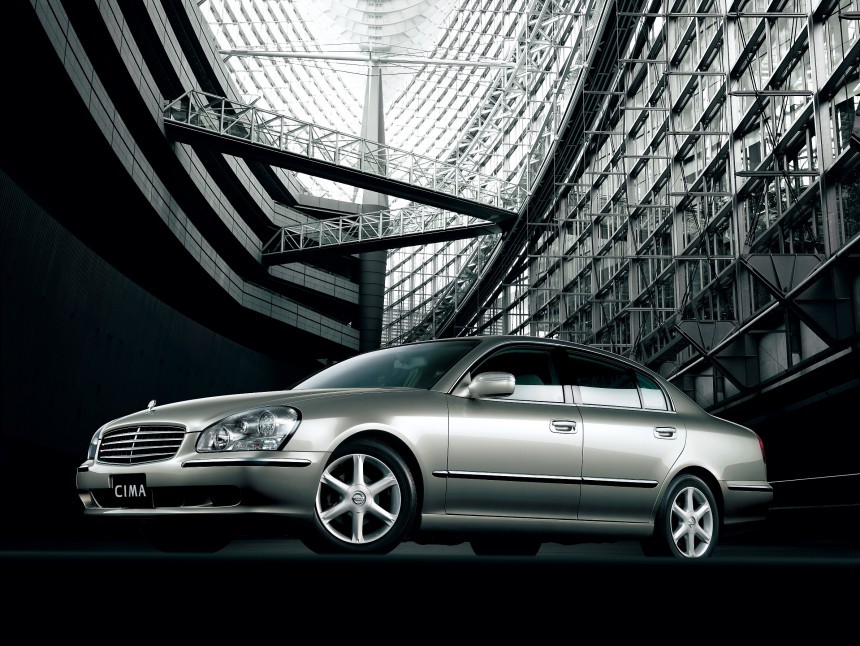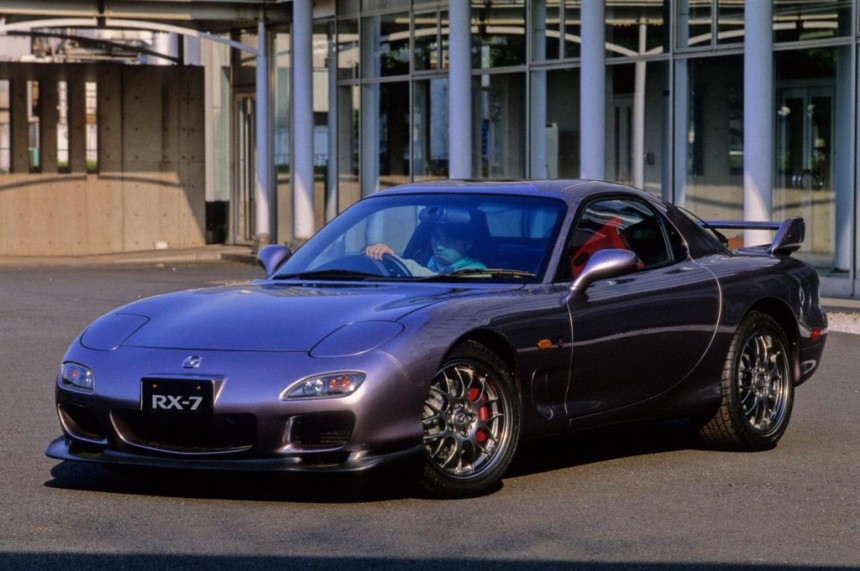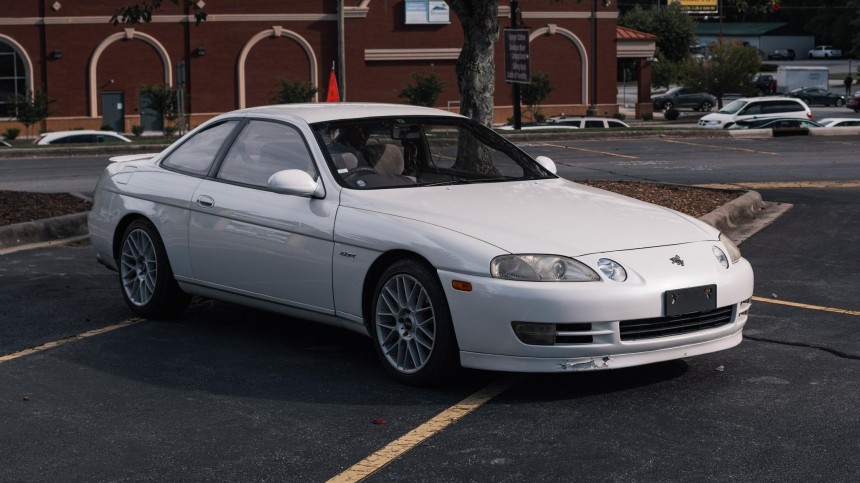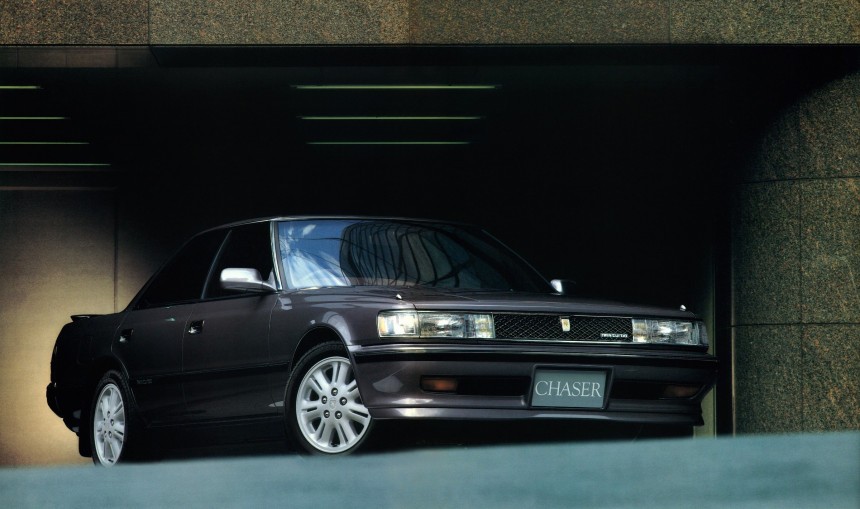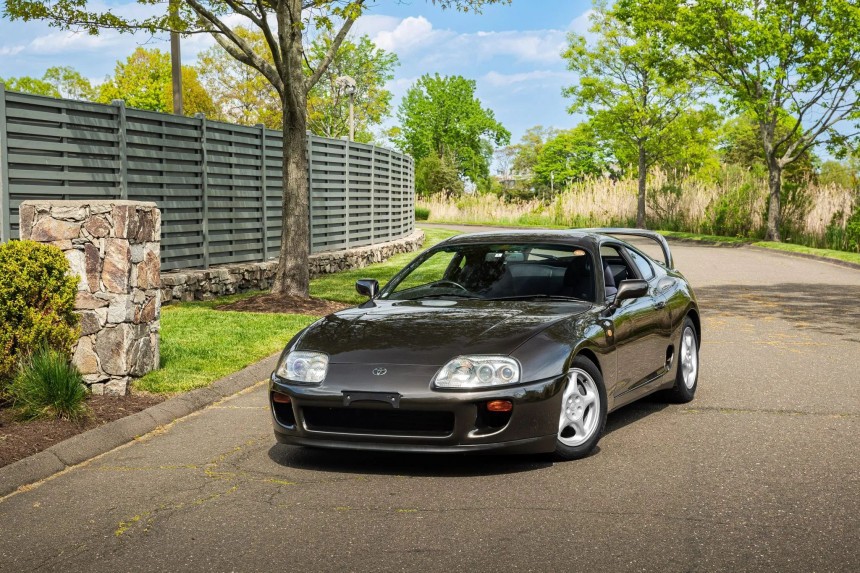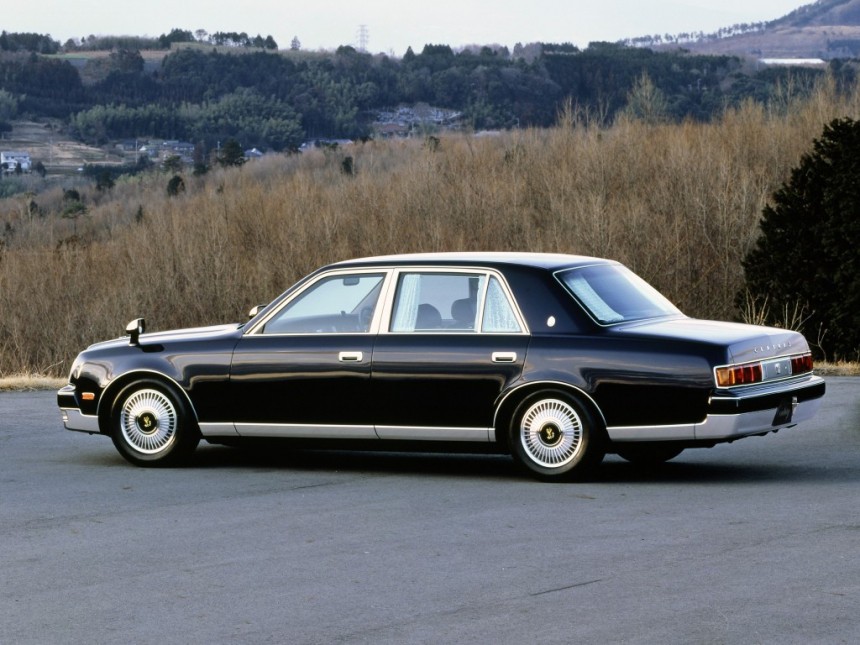As far as automobiles are concerned, Japan is a pretty special place. From overly in-your-face oddballs (classified under the bosozoku umbrella) to cars that sit ridiculously low to the ground (shakotan), oversized exhausts (takeyari), extreme negative camber (onikyan), vehicles decorated with pull rings from trains and buses (tsurikawa), and kei car genre you've surely heard of, it's definitely a distinct culture from those in Europe and the US.
What is particularly interesting about JDM cars is the infamous gentlemen's agreement signed by all major Japanese automakers in 1989. Imposed by the Japan Automobile Manufacturers Association, which was chaired by Shoichiro Toyoda from '86 through '90, said agreement limited production vehicles to 280 ps and 180 kilometers per hour.
That's 276 horsepower and 112 miles per hour, respectively. The question is, why? As it happens, the 1980s saw a huge rise in the number of deaths caused by car accidents. With densely populated cities, narrow urban roads, and twisting mountain roads, it was the right call to impose said limits.
We also have to remember Japan places a strong emphasis on both responsibility and safety, which perfectly explains why all of the major automakers were fine with this agreement. The truth, however, is that said agreement sparked a horsepower war.
Everyone and their dog claimed 276 horsepower at the crank, yet many of the JDM classics from that era actually produced more. Their speeds, however, were truly limited to the aforementioned 112 mph. Even today, the R35 doesn't allow you to give it more on Japan's public roads. Be that as it may, the almost 16-year-old R35 features a sat nav that disables the limiter if you're on a racing circuit.
The 2024 Nissan GT-R NISMO is listed with 600 ps or 591 hp because of Honda, the company that broke the agreement in 2004 with the fourth-generation Legend. Twinned with the second-gen Acura RL for the US market, the four-door sedan was advertised with 300 ps or 296 horsepower under its belt.
All of the following Japanese domestic market cars make 276 ponies on paper, but still, everyone in the automotive industry was aware that everyone sandbagged in order to keep JAMA and the general public happy. Because Honda was the first to step out of line, let's kick things off with the NSX.
Engine displacement grew in 1997, with the C32B packing 294 ps (290 hp) on full song. Punchier than the C30A, the C32B for Japan was advertised with 280 metric ponies to its name. Also worthy of note, the 3.2-liter V6 came with a manual exclusively.
Even after the facelift, automatic models came with the 3.0-liter V6 rather than the more powerful C32B. The automatic's manual shift mode was advertised as "Formula 1-inspired Sequential SportShift."
Series production of the Impreza WRX started in late 1992 with 240 ps (237 hp) for the GC8A. The subsequent GC8B Impreza WRX STi leveled up to 250 ps (247 hp) in early 1994, then Subaru rolled out the STi-tuned Type RA with 275 ps (271 hp).
The fun part, however, starts with the GC8D. Introduced in September 1996, the so-called Version III of the Impreza WRX was upgraded to 280 ps (276 hp). Actually pushing closer to 300 ps (296 hp), the 2.0-liter boxer flaunts an IHI turbo, 1.0 bar of boost compared to 0.87 for the previous version, a larger intercooler, and molybdenum-coated pistons.
Coincidentally, the Impreza WRX STi from that era also made 280 chevaux vapeur. Fast forward to the present day, and the VB-generation WRX S4 for Japan produces the same kind of power as the WRX for the United States. The only difference is torque, namely 277 pound-feet (375 Nm) compared to 258 pound-feet (350 Nm) for the US specification.
A unicorn among Scooby enthusiasts, the 22B STi was produced in limited numbers between March 1998 and August 1998. Based on the two-door STi Type R, the wide-bodied special edition boasts a 2.2-liter engine with the same output as the 2.0-liter WRX, STi, and Type R, hence the 22 in its name. The B – of course – stands for boxer muscle.
10 millimeters wider up front and 40 in the rear in terms of track, the 22B further impresses with its trick suspension (think Bilstein inverted dampers and Eibach springs) and tall rear wing. 400 were built for the automaker's domestic market, with all 400 selling within 48 hours of the order books opening.
The rest of the world received a grand total of 24 units: 16 for the United Kingdom, 5 for Australia, and no fewer than 3 prototypes. Only one 22B was auctioned in 2023 thus far. Mecum found a new owner for chassis number GC8069250 in August 2023, a 22B with merely 686 kilometers on the clock. It sold for a cool $209,000 despite being estimated at anything between $225,000 and $250,000.
In addition to hi-po Imprezas, the Japanese automaker produced hi-po Legacys as well. It all started with the JDM-spec RS and GT-B manuals for 1996, which rock the EJ20R turbo boxer.
Later down the line, the Legacy GT, GT-B, and B4 for Japan received the EJ208 with the same output as their predecessors: 280 metric horsepower or 276 mechanical horsepower. Even the fourth-generation Legacy sported this kind of muscle in Japan, whereas the US spec was rated at 250 horsepower from a turbocharged 2.5 mill known as the EJ255.
The Legacy got serious in 2008 with the introduction of the JDM-only S402. Although rated at 285 ps (281 hp), this engine is also believed to push closer to 300 ponies. The S402 came either as a sedan (codename DBA-BL9) or a station wagon (DBA-BP9).
Evolutions I through IX all feature the 4G63T inline-four turbo, whereas the Evolution X received the 4B11T. The 276-horsepower mark was reached with the fourth generation, and even the tenth was artificially downgraded to 276 hp in Japan.
Just like the Porsche 911, the Lancer Evolution received many small upgrades over the years. The Evo IV, for example, was treated to lighter pistons, more aggressive camshafts, better induction and exhaust systems, and a stronger chassis.
As for the most powerful mass-produced Lancer Evolution of them all, that would be the GSR-based Final Edition. It's not the most powerful, though. Remember the Ralliart FQ-400? Said edition makes a little over 400 horsepower at full chatter.
Marketed as the GTO in Japan, the 3000GT was also sold as the Dodge Stealth in North America. Back then, Mitsubishi was in cahoots with Chrysler rather than Nissan (and alliance partner Renault).
Here's the thing: the GTO Twin Turbo for Japan is rated at 280 ps, the 3000GT for Europe at 286 ps, and the 3000GT VR-4 for the United States at 304 ps. The rating applies to the Stealth R/T Twin Turbo as well. Despite the considerable difference between the Japanese and American specifications, both are officially rated at 308 pound-feet (417 Nm).
Produced over three generations at the Nagoya plant in the Aichi Prefecture, the 3000GT left us in 2000 due to increasingly poor sales. From a high point of 15,973 deliveries in 1994, Mitsubishi Motors North America reported a meager 3,419 in 1999.
Originally fitted with a 2.0-liter turbo inline-four lump, the Galant VR-4 received a 2.0-liter V6 of the twin-turbo variety for the second generation. The Mk3 had said engine punched out to 2.5 liters, thus improving the output from 240 ps to 280 ps.
The third gen of the Galant VR-4 also received a station wagon-bodied sibling in the form of the Legnum VR-4. Both were assembled at the Nagoya plant, which is currently busy with the Outlander three-row crossover and smaller Eclipse Cross.
Once hailed as Japan's Corvette killer, the 300ZX Twin Turbo is a 300-horsepower affair with 283 pound-feet (384 Nm) of twist on deck. As for the Fairlady Z Twin Turbo, the Japanese automaker claimed 276 hp and 286 lb-ft (388 Nm).
Born during the golden era of JDM, the 300ZX was a clean-sheet design. From a viscous differential to better suspension and rack-and-pinion steering, it was a huge departure from the 280ZX.
Internally known as Z31 and Z32 for the facelift, the 300ZX ran between 1983 and 2000. It was also the first Z-line car to switch from an inline-six configuration to a V6. Coincidentally, the 2023 model year Z also sports a twin-turbo sixer.
In April 2017, the one and only Rob Dahm got his hands on an R32 Nissan Skyline GT-R. A totally stock R32, that is. As expected, he strapped the car to a dyno to see what kind of power it makes.
On paper, Nissan says it belts out 276 hp and 260 lb-ft (353 Nm). On the dyno, the R32 delivered 249.77 hp and 246.52 lb-ft (334 Nm) at the rear wheels. In other words, we're dealing with an 11 percent loss in power and a nearly 4 percent loss in torque.
That's well below the 15-percent rule, which goes to show that Godzilla produces more than advertised from the outset. In Japan, even the R34 allegedly makes 276 horsepower instead of the generally agreed 330 or more horsepower at the crank.
When it comes to Skylines, the GT-R always gets the limelight for obvious reasons. On the other hand, the R34 Skyline was offered with more than enough grunt as the 25GT Turbo and 25GT-X Turbo.
Both use a turbocharged inline-six with 2.5 liters of displacement, hence the RB25DET NEO moniker of said engine. Featuring an 86-mm bore and 71.7-mm stroke, the RB25 with the NEO head is rocking solid lifters instead of hydraulic, solenoid variable valve control timing, a hotter thermostat, revised camshafts, and a revised inlet manifold designed for torque at the low end and increased air velocity.
How much torque? Anything between 246 and 268 pound-feet (333 and 363 Nm) for the 25GT-X Turbo. The 25GT Turbo summons up to 253 pound-feet (343 Nm) at 3,200 revolutions per minute. For reference, a 1999 model year Ford Taurus SHO develops 235 horsepower and 230 pound-feet (312 Nm) from a Yamaha-developed V8 displacing 3.4 liters.
Released in February 2001, the X-Trail GT is arguably the most fascinating version of the crossover's first generation. Better known as the Rogue stateside, the X-Trail makes 276 horsepower and 228 pound-feet (309 Nm) in GT flavor.
The Nissan Rogue wasn't even a thing back then, for it started production for the US market in 2007 for model year 2008. Back then, the most potent Rogue of them all used to pump out 170 horsepower and 175 pound-feet (237 Nm) from a 2.5-liter NA I4.
Codenamed QR25DE, the Rogue's naturally-aspirated mill pales in comparison to the SR20VET of the X-Trail GT. Offered from 2001 through 2007, the SR20VET was the Japanese automaker's first production engine with variable valve lift.
Nissan changed the Cima's internal production code to F50 for 2001, and the predecessor's V8 powerplant was also replaced by the F50-specific VK45DD. Seriously, only the F50 generation of the lesser known Cima used this engine.
Nissan's first production V8 with direct injection makes 280 ps and 451 Nm (333 pound-feet) if you take Nissan's numbers at face value. Its real output is 300 ponies or thereabouts, which means the Cima 450 also broke the gentlemen's agreement years before Honda decided to break it publicly.
Those are referred to as Series 6, yet the Series 8 is the FD3S RX-7 that reached the 276-horsepower threshold. It was only available in Japan, and it used to tip the scales at anything between 1,270 kilograms (2,822 pounds) and 1,310 kilos (2,888 pounds).
We've chosen the Spirit R as the best example of an RX-7 with at least 276 horsepower on tap because it's also highly coveted. 1,504 units were produced in total, with prices kicking off at 3,998,000 yen ($27,130 at current exchange rates) for the Type A. The Type C is the rarest of the lot, having been produced in 40 units. It's also the least powerful Spirit R at 255 ps (252 hp) due to its automatic tranny.
Why is the 20B so desirable? Well, it's the only production vehicle to sport a triple-rotor engine. Mazda offered the 13B-RE as well, a two-rotor design with 230 ps (227 hp) and 294 Nm (217 lb-ft) at its disposal. The 20B officially makes 280 ps (276 hp) and 402 Nm (296 lb-ft) from only 2.0 liters.
Both are connected to a JATCO-supplied automatic with four forward gears. The ratios differ, though. A viscous limited-slip differential was originally offered, only to be replaced by a Torsen-style differential later in the Cosmo's production cycle.
In fact, you'll have a hard time finding any major differences between them. Look hard enough, and you will notice a digital gauge cluster in the Soarer compared to analog instruments for the SC. Pretty weird considering that Lexus is the luxury-oriented brand, but then again, what's done is done.
The Z30 Soarer to get is the 2.5GT-T, also known as the JZZ30. It's powered by the overengineered 1JZ-GTE, which made 363 Nm (268 pound-feet) between 1991 and 1996. For 1997, the Japanese automaker switched from a parallel twin-turbo setup to a single turbo and VVT-I, thus increasing peak torque of the grand tourer to 378 Nm (279 pound-feet).
Care to guess what JZ is hiding under the hood? Not Jay-Z the rapper, but the 1JZ-GTE that premiered in the Z30 Toyota Soarer 2.5GT-T we covered a moment ago. The naturally-aspirated 1JZ-GE was available as well, packing 180 ps (178 horsepower) at 6,000 revolutions per minute as opposed to 280 ps (276 horsepower) for the twin-turbo'd engine.
Displacing 2,492 cubic centimeters, the 1JZ-GTE carried over to the subsequent X100. The Chaser didn't get the opportunity to see the gentlemen's agreement become obsolete because it was replaced by the Verossa in 2001. The successor was discontinued in 2004 in favor of the Mark X, a rear-driven alternative to the front-driven Camry.
Less of a grand tourer compared to the Soarer, yet too large and heavy to be considered a bonafide sports car, the Supra uses the Soarer's drivetrain assemblies, subframe, and suspension. Slightly shorter than its cousin, the A80 (actually JZA80) came with either the naturally-aspirated 2JZ-GE or twin-turbocharged 2JZ-GTE that received VVT-i in the fall of 1997.
Allegedly good for 276 horsepower and 333 pound-feet (451 Nm), the 2JZ-GTE VVT-i's declared output is obviously a big fat lie. Even today's Supra lies about its actual output for both the BMW-sourced B48 four-cylinder and B58 six-cylinder engines.
A double-overhead-cam V12 with a displacement of 4,996 cubic centimeters, the 1GZ-FE was retired in 2017. It never saw another application other than the G50 Century and its far more luxurious brother. The Century Royal carried a sticker price of 52,500,000 yen, converting to $356,230 at current exchange rates. Adjusted for inflation, that'd be $391,825.
In export markets, the second-generation Century was advertised with 220 kW, meaning 299 metric horsepower or 295 mechanical ones. Toyota even made a 1GZ-FE for compressed natural gas, bearing the 1GZ-FNE codename. For the third generation, the Century downsized to eight cylinders and hybrid assistance for a system total of 431 ps (425 hp).
That's 276 horsepower and 112 miles per hour, respectively. The question is, why? As it happens, the 1980s saw a huge rise in the number of deaths caused by car accidents. With densely populated cities, narrow urban roads, and twisting mountain roads, it was the right call to impose said limits.
We also have to remember Japan places a strong emphasis on both responsibility and safety, which perfectly explains why all of the major automakers were fine with this agreement. The truth, however, is that said agreement sparked a horsepower war.
The 2024 Nissan GT-R NISMO is listed with 600 ps or 591 hp because of Honda, the company that broke the agreement in 2004 with the fourth-generation Legend. Twinned with the second-gen Acura RL for the US market, the four-door sedan was advertised with 300 ps or 296 horsepower under its belt.
All of the following Japanese domestic market cars make 276 ponies on paper, but still, everyone in the automotive industry was aware that everyone sandbagged in order to keep JAMA and the general public happy. Because Honda was the first to step out of line, let's kick things off with the NSX.
Honda NSX NA2
Sold under the Honda brand in the Land of the Rising Sun, the first-generation NSX came with a choice of two naturally-aspirated V6 engines: C30A and C32B, meaning 3.0 and 3.2 liters. The latter is referred to as NA2, and NA2 does include pre-facelift models with the pop-up headlights we all know and love.Engine displacement grew in 1997, with the C32B packing 294 ps (290 hp) on full song. Punchier than the C30A, the C32B for Japan was advertised with 280 metric ponies to its name. Also worthy of note, the 3.2-liter V6 came with a manual exclusively.
Even after the facelift, automatic models came with the 3.0-liter V6 rather than the more powerful C32B. The automatic's manual shift mode was advertised as "Formula 1-inspired Sequential SportShift."
GC8D Subaru Impreza WRX
The fun part, however, starts with the GC8D. Introduced in September 1996, the so-called Version III of the Impreza WRX was upgraded to 280 ps (276 hp). Actually pushing closer to 300 ps (296 hp), the 2.0-liter boxer flaunts an IHI turbo, 1.0 bar of boost compared to 0.87 for the previous version, a larger intercooler, and molybdenum-coated pistons.
Coincidentally, the Impreza WRX STi from that era also made 280 chevaux vapeur. Fast forward to the present day, and the VB-generation WRX S4 for Japan produces the same kind of power as the WRX for the United States. The only difference is torque, namely 277 pound-feet (375 Nm) compared to 258 pound-feet (350 Nm) for the US specification.
Subaru Impreza 22B STi
10 millimeters wider up front and 40 in the rear in terms of track, the 22B further impresses with its trick suspension (think Bilstein inverted dampers and Eibach springs) and tall rear wing. 400 were built for the automaker's domestic market, with all 400 selling within 48 hours of the order books opening.
The rest of the world received a grand total of 24 units: 16 for the United Kingdom, 5 for Australia, and no fewer than 3 prototypes. Only one 22B was auctioned in 2023 thus far. Mecum found a new owner for chassis number GC8069250 in August 2023, a 22B with merely 686 kilometers on the clock. It sold for a cool $209,000 despite being estimated at anything between $225,000 and $250,000.
Subaru Legacy II through IV with the high-output EJ20
Later down the line, the Legacy GT, GT-B, and B4 for Japan received the EJ208 with the same output as their predecessors: 280 metric horsepower or 276 mechanical horsepower. Even the fourth-generation Legacy sported this kind of muscle in Japan, whereas the US spec was rated at 250 horsepower from a turbocharged 2.5 mill known as the EJ255.
The Legacy got serious in 2008 with the introduction of the JDM-only S402. Although rated at 285 ps (281 hp), this engine is also believed to push closer to 300 ponies. The S402 came either as a sedan (codename DBA-BL9) or a station wagon (DBA-BP9).
Mitsubishi Lancer Evo IV through Evo X
Just like the Porsche 911, the Lancer Evolution received many small upgrades over the years. The Evo IV, for example, was treated to lighter pistons, more aggressive camshafts, better induction and exhaust systems, and a stronger chassis.
As for the most powerful mass-produced Lancer Evolution of them all, that would be the GSR-based Final Edition. It's not the most powerful, though. Remember the Ralliart FQ-400? Said edition makes a little over 400 horsepower at full chatter.
Mitsubishi GTO Twin Turbo
Here's the thing: the GTO Twin Turbo for Japan is rated at 280 ps, the 3000GT for Europe at 286 ps, and the 3000GT VR-4 for the United States at 304 ps. The rating applies to the Stealth R/T Twin Turbo as well. Despite the considerable difference between the Japanese and American specifications, both are officially rated at 308 pound-feet (417 Nm).
Produced over three generations at the Nagoya plant in the Aichi Prefecture, the 3000GT left us in 2000 due to increasingly poor sales. From a high point of 15,973 deliveries in 1994, Mitsubishi Motors North America reported a meager 3,419 in 1999.
EC5A Mitsubishi Galant VR-4 and EC5W Mitsubishi Legnum VR-4
The Lancer Evolution's predecessor was developed specifically for rallying. With Group A regulations requiring the production of at least 5,000 road-going cars, Mitsubishi was much obliged to make the Galant VR-4 available for Regular Joes and Janes in the US, Australia, New Zealand, and Japan.Originally fitted with a 2.0-liter turbo inline-four lump, the Galant VR-4 received a 2.0-liter V6 of the twin-turbo variety for the second generation. The Mk3 had said engine punched out to 2.5 liters, thus improving the output from 240 ps to 280 ps.
The third gen of the Galant VR-4 also received a station wagon-bodied sibling in the form of the Legnum VR-4. Both were assembled at the Nagoya plant, which is currently busy with the Outlander three-row crossover and smaller Eclipse Cross.
Z32 Nissan Fairlady Z Twin Turbo
Born during the golden era of JDM, the 300ZX was a clean-sheet design. From a viscous differential to better suspension and rack-and-pinion steering, it was a huge departure from the 280ZX.
Internally known as Z31 and Z32 for the facelift, the 300ZX ran between 1983 and 2000. It was also the first Z-line car to switch from an inline-six configuration to a V6. Coincidentally, the 2023 model year Z also sports a twin-turbo sixer.
R32 through R34 Nissan Skyline GT-R
On paper, Nissan says it belts out 276 hp and 260 lb-ft (353 Nm). On the dyno, the R32 delivered 249.77 hp and 246.52 lb-ft (334 Nm) at the rear wheels. In other words, we're dealing with an 11 percent loss in power and a nearly 4 percent loss in torque.
That's well below the 15-percent rule, which goes to show that Godzilla produces more than advertised from the outset. In Japan, even the R34 allegedly makes 276 horsepower instead of the generally agreed 330 or more horsepower at the crank.
R34 Nissan Skyline 25GT Turbo and 25GT-X Turbo
Both use a turbocharged inline-six with 2.5 liters of displacement, hence the RB25DET NEO moniker of said engine. Featuring an 86-mm bore and 71.7-mm stroke, the RB25 with the NEO head is rocking solid lifters instead of hydraulic, solenoid variable valve control timing, a hotter thermostat, revised camshafts, and a revised inlet manifold designed for torque at the low end and increased air velocity.
How much torque? Anything between 246 and 268 pound-feet (333 and 363 Nm) for the 25GT-X Turbo. The 25GT Turbo summons up to 253 pound-feet (343 Nm) at 3,200 revolutions per minute. For reference, a 1999 model year Ford Taurus SHO develops 235 horsepower and 230 pound-feet (312 Nm) from a Yamaha-developed V8 displacing 3.4 liters.
Nissan X-Trail GT
The Nissan Rogue wasn't even a thing back then, for it started production for the US market in 2007 for model year 2008. Back then, the most potent Rogue of them all used to pump out 170 horsepower and 175 pound-feet (237 Nm) from a 2.5-liter NA I4.
Codenamed QR25DE, the Rogue's naturally-aspirated mill pales in comparison to the SR20VET of the X-Trail GT. Offered from 2001 through 2007, the SR20VET was the Japanese automaker's first production engine with variable valve lift.
F50 Nissan Cima 450
Our final Nissan entry for this JDM-infused story is the Cima. An executive sedan between 1988 and 1996, it was elevated to the full-size club in 1996 with the introduction of the Y33, which came with either a 270-ps turbo V6 or 270-ps NA V8.Nissan changed the Cima's internal production code to F50 for 2001, and the predecessor's V8 powerplant was also replaced by the F50-specific VK45DD. Seriously, only the F50 generation of the lesser known Cima used this engine.
Nissan's first production V8 with direct injection makes 280 ps and 451 Nm (333 pound-feet) if you take Nissan's numbers at face value. Its real output is 300 ponies or thereabouts, which means the Cima 450 also broke the gentlemen's agreement years before Honda decided to break it publicly.
Series 8 Mazda RX-7 Spirit R
More than 811,000 examples of the RX-7 were produced from 1978 to 2002, of which the third generation is the rarest. Mazda's production records list a grand total of 68,589, of which a handful were sold in the US as 1993, 1994, and 1995 models.Those are referred to as Series 6, yet the Series 8 is the FD3S RX-7 that reached the 276-horsepower threshold. It was only available in Japan, and it used to tip the scales at anything between 1,270 kilograms (2,822 pounds) and 1,310 kilos (2,888 pounds).
We've chosen the Spirit R as the best example of an RX-7 with at least 276 horsepower on tap because it's also highly coveted. 1,504 units were produced in total, with prices kicking off at 3,998,000 yen ($27,130 at current exchange rates) for the Type A. The Type C is the rarest of the lot, having been produced in 40 units. It's also the least powerful Spirit R at 255 ps (252 hp) due to its automatic tranny.
Mazda Eunos Cosmo 20B-REW
The holy grail of series-production rotary cars, the Eunos-branded Cosmo with the 20B-REW is hugely collectible. Shortened to Cosmo 20B, this GT-oriented coupe was produced in 3,937 copies.Why is the 20B so desirable? Well, it's the only production vehicle to sport a triple-rotor engine. Mazda offered the 13B-RE as well, a two-rotor design with 230 ps (227 hp) and 294 Nm (217 lb-ft) at its disposal. The 20B officially makes 280 ps (276 hp) and 402 Nm (296 lb-ft) from only 2.0 liters.
Both are connected to a JATCO-supplied automatic with four forward gears. The ratios differ, though. A viscous limited-slip differential was originally offered, only to be replaced by a Torsen-style differential later in the Cosmo's production cycle.
Z30 Toyota Soarer 2.5GT-T
Sold in the US market between 1991 and 2010 for the 1992 through 2010 model years, the first-gen SC is sometimes described as a fourth-generation Supra with a fancy suit. Designed at Calty Design Research in sunny California, the SC is more closely related to the Z30 Soarer than the MKIV.In fact, you'll have a hard time finding any major differences between them. Look hard enough, and you will notice a digital gauge cluster in the Soarer compared to analog instruments for the SC. Pretty weird considering that Lexus is the luxury-oriented brand, but then again, what's done is done.
The Z30 Soarer to get is the 2.5GT-T, also known as the JZZ30. It's powered by the overengineered 1JZ-GTE, which made 363 Nm (268 pound-feet) between 1991 and 1996. For 1997, the Japanese automaker switched from a parallel twin-turbo setup to a single turbo and VVT-I, thus increasing peak torque of the grand tourer to 378 Nm (279 pound-feet).
X80 Toyota Chaser GT Twin Turbo
A nameplate that left us in 2001, the Chaser was once a compact. Elevated to mid-size status in 1980, the Chaser joined the 276-horsepower club with the fourth generation. It bears the X80 codename, and the one to import under the 25-year rule to the United States of America is the Chaser GT Twin Turbo.Care to guess what JZ is hiding under the hood? Not Jay-Z the rapper, but the 1JZ-GTE that premiered in the Z30 Toyota Soarer 2.5GT-T we covered a moment ago. The naturally-aspirated 1JZ-GE was available as well, packing 180 ps (178 horsepower) at 6,000 revolutions per minute as opposed to 280 ps (276 horsepower) for the twin-turbo'd engine.
Displacing 2,492 cubic centimeters, the 1JZ-GTE carried over to the subsequent X100. The Chaser didn't get the opportunity to see the gentlemen's agreement become obsolete because it was replaced by the Verossa in 2001. The successor was discontinued in 2004 in favor of the Mark X, a rear-driven alternative to the front-driven Camry.
A80 Toyota Supra Turbo
A JDM story without the MKIV is like going through summer without spending a day at the beach. Love it or hate it because of the superficial fanboys who don't know anything else other than it being featured in the original Fast & Furious from 2001, the A80 is what everyone thinks when they hear the word Supra.Less of a grand tourer compared to the Soarer, yet too large and heavy to be considered a bonafide sports car, the Supra uses the Soarer's drivetrain assemblies, subframe, and suspension. Slightly shorter than its cousin, the A80 (actually JZA80) came with either the naturally-aspirated 2JZ-GE or twin-turbocharged 2JZ-GTE that received VVT-i in the fall of 1997.
Allegedly good for 276 horsepower and 333 pound-feet (451 Nm), the 2JZ-GTE VVT-i's declared output is obviously a big fat lie. Even today's Supra lies about its actual output for both the BMW-sourced B48 four-cylinder and B58 six-cylinder engines.
G50 Toyota Century and G51 Toyota Century Royal
We picked the G50 and G51 last because they're easily the most expensive and plushest cars of the bunch. Codenamed G51 for the Century Royal official state car used by the Emperor of Japan, the ultra-luxury sedan is unique among Toyotas because it's the only 'Yota to come with a V12 engine.A double-overhead-cam V12 with a displacement of 4,996 cubic centimeters, the 1GZ-FE was retired in 2017. It never saw another application other than the G50 Century and its far more luxurious brother. The Century Royal carried a sticker price of 52,500,000 yen, converting to $356,230 at current exchange rates. Adjusted for inflation, that'd be $391,825.
In export markets, the second-generation Century was advertised with 220 kW, meaning 299 metric horsepower or 295 mechanical ones. Toyota even made a 1GZ-FE for compressed natural gas, bearing the 1GZ-FNE codename. For the third generation, the Century downsized to eight cylinders and hybrid assistance for a system total of 431 ps (425 hp).







































